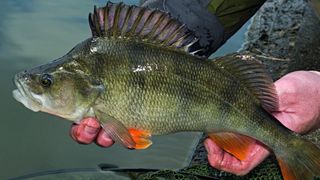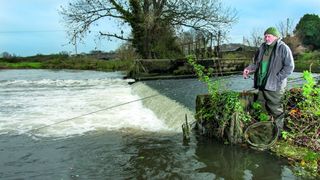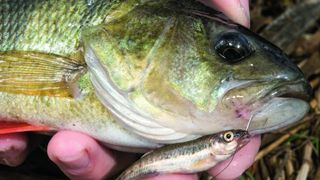Perch fishing tips for winter on rivers
The next few months is a wonderful time to be targeting rivers for perch as they can produce some brilliant sport

Welcome to Advnture, the new home of AnglersMail.co.uk
Perch have made a massive return to all our waters in recent years.
Although the real biggies seem to be coming from commercial stillwater fisheries as a rule, there are many rivers where big perch are making a comeback.
It’s here where they are not yet being targeted. So take note of the perch fishing tips I’ll share you here and check out your local river venues soon.
I am just getting into river perching, and there is a great deal of enjoyment to be had seeking them out and finding new swims.
The perch fishing tips shared here were from Pete Reading, pictured in a weir slack.
Preferred habitat
They do favour slacks and backwaters, and love cover of all sorts, especially when there is vertical structure nearby. Weirpools will often have a deep slack area close to vertical pilings, for example.
Advnture Newsletter
All the latest inspiration, tips and guides to help you plan your next Advnture!

Juicy mouthfuls
A nice big lobworm, hooked through the middle and fished hard on the bottom, seems to be most productive.
I have had a few recently on a big peeled prawn, which chub also seem to be keen on!
Laying on with a static worm is one of those overlooked perch fishing tips. It seems to be more effective than twitching a worm, or even trotting it at mid-depth.
It may be that perch seek a lot of their food by investigating nooks and crannies as they patrol along the bottom.
An extra half-worm, nicked onto the hook, will give a bigger bait with more wormy juices being released as a scent trail!
Favoured floats

I use a Chubber or Loafer float, and simply lay on with a bunch of AAA shot, nothing very sophisticated.
Perch rarely are that fussy; they will suck in the worm and give bold and confident bites as a rule.
River perching, to me, entails a few short hours from afternoon to dusk in a likely-looking hole or two.
Do it with a large lobworm on a size 8, wide-gape hook, laid-on under a float.
Red maggots and bits of broken lobworm should be fed into the swim at regular intervals.
Lively action
Perch will go after fry at dusk, and become more active fish hunters.
This is when a minnow or other small fish livebait would be more likely to be taken than a lob.
Looking for perch striking at such times is a good way to locate them.
They are very localised, and can be hard to find on rivers that do not have high populations.
Lure fishing, especially dropshotting, is now very popular, and is undoubtedly very effective. It enables a lot of water to be covered by the roving angler.
Most Popular

